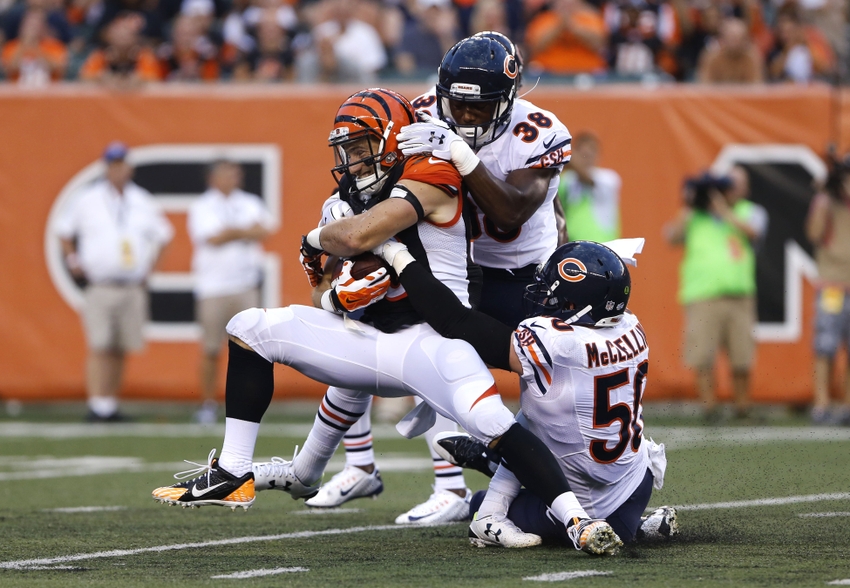Brad Biggs at the Chicago Tribune answers your questions. Here he addresses the strengths and weakness in the play of rookie safety Adrian Amos:
“The next progression in his game will be to begin making impact plays and get his hands on balls and show the range in the middle of the field, the trait you are really looking for from a free safety against the passing offenses in the NFL right now. But as I see it, Amos is doing everything they are asking him to.
“As far as the grades he receives from PFF, those are evaluations done watching television copies of the game. You can watch 10 plays without seeing Amos really be around any play because of the tight camera angles to the ball, especially in a game like the Bears had against the Chiefs, who had a lateral passing game or one that is short to very intermediate.”
This is essentially my complaint about PFF. They do their best but there are limitations and I wouldn’t take these grades too seriously.
One thing I’ll emphasize that is related to Biggs’ comment. Though the camera often won’t show where a free safety goes over the course of an entire play, you should be seeing him under some circumstances. This is particularly true of passes along the side line where safeties with good range come in near the end of the play over the top to assist a cornerback in breaking up the connection. I never see Amos doing this and I consider it to be a bad sign. In fairness, as Biggs implies, it’s possible that they aren’t asking him to help out under these circumstances – I won’t claim to know his assignments. But I am worried that he may lack the range to make plays on the ball.

